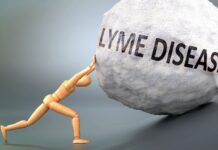I do it every week. I stand at the fish counter and grumble about the rising prices, but then inevitably drop a bundle that is virtually worth its weight in gold into my shopping cart. Among many other alterations to our family menu in an effort to promote health by dropping processed foods, I started purchasing the real deal—fresh salmon fillets—in an effort to promote better health. (Don’t worry, I haven’t let go of everything; there are still lots of snacks in my pantry, along with other health food no-nos.) I was already serving fish, mostly salmon, for supper twice a week. (Of course, only to myself and hubby; my kids are no less picky than yours.) After all, everyone knows how good salmon is for you, right? Full of omega-3 fatty acids and vitamin D, it is often touted as the ultimate health food.
Well, not necessarily. As I recently discovered, the facts about fish are kind of slippery (pun intended), and what I learned about salmon in particular has definitely given me food for thought.
You see, it all depends on where that salmon on your plate comes from, something I never thought about very much. I always naively assumed that it reached my supermarket after having been caught via hook and worm, brought to the docks, transported to the distributor and then ultimately to the store.
But that isn’t always the case. You may have noticed a large discrepancy in price between the different types of salmon.That’s because farmed salmon is a lot cheaper than the wild variety—for many reasons.
A Different Kettle of Fish
Commercial salmon farming started in Norway in the 1970s, with millions of fish being raised in floating feedlots along the coast. Then in the 1980s and ’90s it took off in many other countries around the world. By 1996, farmed salmon production exceeded the world’s total commercial harvest of wild salmon. That’s because farming salmon was found to be relatively inexpensive, the technology involved was pretty basic, and it worked well in many different environments.
By the year 2000, farmed salmon had practically taken over the salmon industry. It was much cheaper, the flesh was fattier and it was available all year long—and the average person didn’t know, or care to know, more than that. Nowadays, salmon is farmed commercially in many countries, including Denmark, Ireland, Scotland and Chile, thanks to their naturally cool and sheltered tidal waters. Production is often controlled by multinational companies.





















